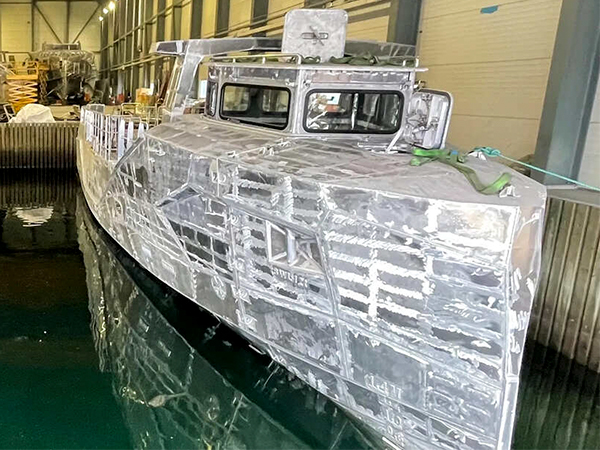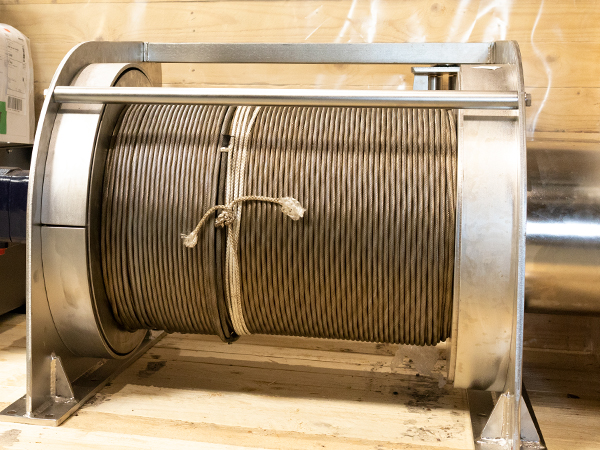Robotic technology offering a greener, smarter and safer solution.
World’s first fleet of commercial autonomous robot exploration vessels. The Ocean Infinity team refer to this as the ‘Armada’ fleet. At present, two different-sized hulls for these robot ships are being constructed in Norway.

Armanda survey vessel scans the seabed. Picture: Ocean Infinity
Grovfjord Mek. Verksted (GMV), Norway’s largest manufacturer of aluminum workboats, will build a fleet of up to 13 vessels capable of wholly robotic operations for Ocean Infinity. The vessels a made of aluminum and are 21x5,4 meter and are fully hybrid-electric vessels outfitted with engines, batteries and propeller - designed to reduce CO2 emissions.
The first ships launched and GMV expects to deliver the first vessels after the summer of 2023.

Remote controlled aluminium boat at Grovfjord Mek. Verksted. Picture: GMV
Ambitious company with at green agenda
In the not too distant future, remote and lean-crewed operations at sea, will overtake conventional crewed operations. Ocean Infinity has with their ambitious Armada project taken the lead and made remote ship operations at true reality. Ocean Infinity Group is a world-leading company in bottom mapping, search and underwater inspections, and was established in 2017 in the USA. Ocean Infinity's customers include oil companies and offshore wind companies, spread all over the world.
About the Armanda project
Ocean Infinity was born out of an idea to challenge the conventional ways that the maritime industry was operating. It quickly became clear that using marine robots in fleets not only meant that higher quality data was captured faster, but also more environmental friendly. Since 2016, they have been involved in some of the most advanced uncrewed and robotic fleet operations in the world.
The autonomous vessels will be capable of launching remotely operated underwater vehicles to a maximum depth of 6000m that will carry out surveys on pipeline routes or acquire seismic data. The ships must be able to be transported worldwide by air.
The vessels will be controlled via satellites from onshore facilities in the USA, England and Asia. From these stations, they have full control of the ships and which can be equipped with Remotely Operated Underwater Vehicles (ROV) and autonomous underwater vessels (AUVs).
Armada robotic project being explained. Source: Ocean Infinity
The new Armada autonomous fleet does not require a host vessel, thus emitting up to 90% less CO2 emissions compared to conventional oceanographic survey methods. The boats will offer significant fuel savings and optimized operational performance, while they will also be safer than traditional exploration vessels as no staff will be required to work at sea.
Southampton-based remote control
Remote Control Centre when they go live for the first time. Source: Ocean Infinity
AS SCAN solutions
GMV has selected AS SCAN to provide steering system with steering gear and pump unit and remotely operated stainless steel anchor winches.
"AS SCAN is delighted to be part of this innovative project in cooperation with GMV” says Michael Ørts Vejlgaard, Managing Director at AS SCAN. “We are very proud to have been chosen for a cutting-edge project designed for high performance while reducing the environmental footprint.”
One of the key objectives for a project like this is to deliver a reliable and efficient product. These vessels will be in the open ocean far away from land and maintenance providers. Ocean Infinity needs to know that its vessels are meeting peak performance.

Stainless steel anchor winch ready to be installed on robotic vessel.
Before the anchor winches are sendt to Norway the steel wire is spooled on the winch to make the installation is as easy as possible for the shipyard.

